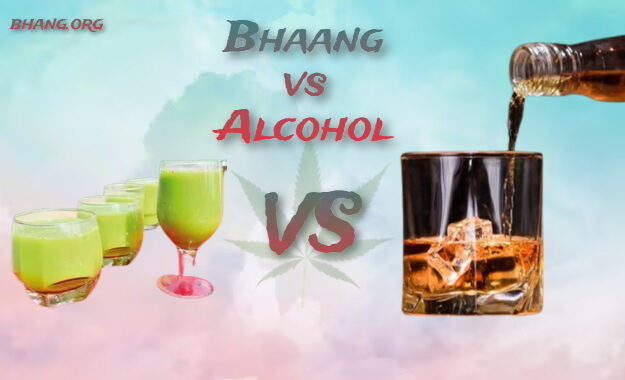Understanding Bhang: Uses, Risks, and Preparation
Bhang, derived from the buds and leaves of the Cannabis sativa plant, is a paste often integrated into food and beverages. While it may offer relief from various conditions like pain, muscle spasms, seizures, nausea, and vomiting, caution is warranted due to associated risks.
What is Bhang?
Bhang is an edible mixture crafted from the buds, leaves, and flowers of the female cannabis plant, known as marijuana. It has been a staple in Indian cuisine and religious practices for centuries, particularly during Hindu festivals like Holi. Additionally, it holds significance in Ayurvedic medicine, believed to alleviate symptoms such as nausea, vomiting, and physical pain.
Preparation of Bhang:
To make bhang, the buds and leaves of the Cannabis sativa plant are dried, ground, and soaked to create a paste. Despite cannabis being largely illegal in India, the sale and consumption of bhang are often tolerated, especially in religious communities. However, the Indian National Policy on Narcotics and Psychotropic Substances permits only the addition of cannabis leaves, excluding other parts of the plant.
Consumption Methods:
Bhang can be consumed in various forms. One popular method is blending it with curd and whey to create a beverage called bhang lassi. Another common option is bhang goli, a drink made by mixing freshly ground cannabis with water. Additionally, bhang can be combined with sugar and ghee to make sweets.
Is Bhaang better than alcohol?
Debate: Alcohol vs. Bhang
The comparison between alcohol and Bhang has been ongoing for decades, with proponents on both sides arguing their merits. Generally, Bhang is considered to carry fewer risks than alcohol, but several factors complicate a straightforward comparison between the two substances.
Key Considerations:
Lack of Research:
Research on alcohol far surpasses that on Bhang. While studies on Bhang are increasing, there remains a lack of large-scale, long-term research, leading to potential biases in perceived safety.
Variety of Products:
Bhang offers a wide range of products and consumption methods, including vaping and edibles. The chosen method of consumption significantly influences both short- and long-term effects. For instance, smoking poses risks to lung health that are not present with edibles.
Individual Biology:
Reactions to alcohol and Bhang vary widely among individuals. While some may have a high tolerance for alcohol but a low tolerance for Bhang, others may experience the opposite. Individual differences in metabolism and physiology play a significant role in how each substance affects a person.
Short-Term Effects
The immediate effects of Bhang and alcohol can vary significantly from person to person.
Alcohol:
Intoxication with alcohol can lead to diverse experiences among individuals. While some may feel relaxed, others might experience restlessness.
Common short-term effects of alcohol include:
- Impaired coordination and reflexes
- Reduced cognitive skills
- Impaired judgment
- Feelings of relaxation or giddiness
- Drowsiness or restlessness
- Decreased attention span
- Nausea and vomiting
Additionally, the morning after consuming alcohol, individuals may experience a hangover, characterized by headaches and diarrhea, among other symptoms.
Bhang:
The immediate effects of Bhang also differ from person to person.
Typical short-term effects of Bhang include:
- Altered perception of time
- Impaired coordination and reflexes
- Reduced cognitive function and judgment
- Feelings of relaxation, though some may experience anxiety
- Giddiness
- Drowsiness
- Nausea
- Pain relief
- Dry mouth and red eyes
- Increased appetite
It’s important to note that these effects may vary depending on the method of consumption, such as smoking or vaping.
After consuming Bhang, some individuals may experience lingering effects, such as headaches, drowsiness, or a sense of mental fog.
Long-Term Health Risks
Similar to the short-term effects, the long-term impacts of alcohol and Bhang vary from individual to individual.
Alcohol:
Prolonged or heavy alcohol consumption can lead to several long-term health risks, including:
- Liver disease: Excessive alcohol intake can result in chronic liver disease, impairing the liver’s ability to detoxify the body.
- Pancreatitis: Alcohol misuse is a significant cause of pancreatitis, a condition affecting the pancreas.
- Heart damage: Heavy drinking can harm the cardiovascular system, leading to various heart-related issues.
- Stomach and digestive problems: Large alcohol intake may irritate the stomach, causing ulcers, pain, and digestive discomfort.
- Central nervous system damage: Long-term alcohol abuse can cause damage to the central nervous system, resulting in numbness and tingling sensations.
- Erectile dysfunction: Chronic alcohol use has been linked to erectile dysfunction in men.
- Infertility: Both male and female fertility may be affected by long-term or excessive alcohol consumption.
Bhang:
The long-term effects of Bhang are not fully elucidated, and different consumption methods further complicate the picture.
General long-term effects associated with Bhang include:
- Brain development issues: Research suggests that using Bhang during adolescence may lead to long-term brain development issues. However, it remains uncertain whether these effects are permanent.
- Schizophrenia: While the relationship between Bhang use and schizophrenia is complex and not fully understood, some evidence suggests a potential link, especially among individuals with a family history of the disorder.
It’s important to note that these effects do not encompass those related to specific consumption methods.
Furthermore, limited high-quality, long-term studies on Bhang and its consequences exist, emphasizing the need for further research in this area.
Comparing the Two
Potential for Misuse
Both alcohol and Bhang carry the potential for misuse, leading to emotional and/or physical dependence on these substances.
Alcohol:
Alcohol use disorder is a prevalent issue, with an estimated 15 million individuals in the United States affected by it, as reported by the National Institute on Alcohol Abuse and Alcoholism (NIAAA).
Signs of alcohol misuse may include:
- Inability to reduce alcohol consumption.
- Adjusting one’s schedule due to drinking habits and resulting hangovers.
- Experiencing strong cravings for alcohol.
- Experiencing withdrawal symptoms such as nausea, sweating, shaking, and headaches when abstaining from alcohol.
- Facing difficulties at work or school due to alcohol consumption.
- Engaging in arguments with loved ones as a result of alcohol use.
Bhang:
Contrary to common belief, cannabis addiction is not uncommon. A 2015 study highlighted its prevalence.
Conclusion:
Bhang, derived from the Cannabis sativa plant, has been used for centuries in Indian culture for its potential medicinal properties. While it may offer relief from various ailments, caution is warranted due to potential risks associated with its consumption. Further research is needed to better understand the long-term effects and potential benefits of Bhang.
FAQs
What is Bhang and how is it made?
Bhang is a paste made from the buds, leaves, and flowers of the Cannabis sativa plant. To prepare it, the plant material is dried, ground, and soaked to create a paste that can be added to food and beverages.
What are the potential benefits of consuming Bhang?
Bhang is believed to offer relief from various conditions such as pain, muscle spasms, seizures, nausea, and vomiting. It has been used for centuries in Indian cuisine, religious practices, and Ayurvedic medicine.
How is Bhang typically consumed?
Bhang can be consumed in various forms, including blended with curd and whey to make a beverage called bhang lassi, or mixed with water to create bhang goli. It can also be combined with sugar and ghee to make sweets.
What are the short-term effects of consuming Bhang?
Short-term effects of consuming Bhang may include altered perception of time, impaired coordination and reflexes, relaxation, giddiness, drowsiness, nausea, pain relief, dry mouth, red eyes, and increased hunger.
Are there any long-term health risks associated with Bhang consumption?
While the long-term effects of Bhang are not fully understood, some potential risks include brain development issues, particularly when used during adolescence, and a possible link to schizophrenia, especially in individuals with a family history of the disorder.





Leave a Reply